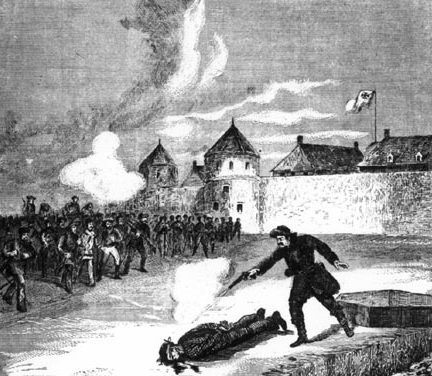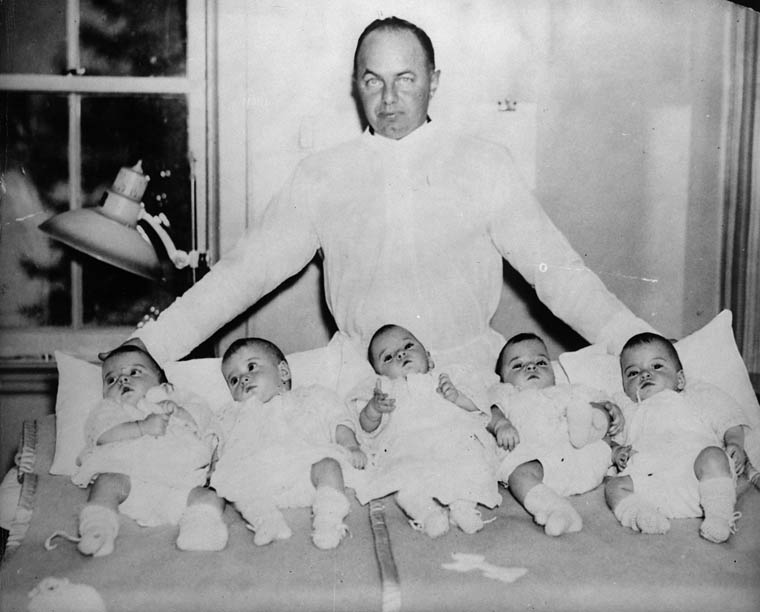The information I'm getting this from is, hold the laughter please, predominantly from a grade seven textbook. Now, I know that sounds silly, but lets be honest here - how many of you can really, honestly give a full, detailed explanation of the events of the Red River Rebellion(s)? Can you tell me why he was executed? How about what the rebellions were even about? I know a fair few would, and honestly anyone interested enough to read an internet history blog would likely already know, but... screw it, I'm doing it anyways. Now without further ado...
 |
| A modern depiction of Winnipeg. |
Riel was born into a time of the first significant Metis population. Situated mostly in and around Red River Valley, close to where Winnipeg is today, the Metis were mostly of French and Native birth, meaning they weren't really a part of either group. Neither really wanted them as they weren't really pure, leaving them in some sort of weird cultural limbo. Nevertheless, they had a significant population in and around the area, and were starting to form their own way of life that took pieces of both parent cultures and morphing it into a new breed of their own, much like some sort of beautiful child, representing the whole idea of Canada as a whole. But don't forget, they were still pretty unwanted.
Meanwhile in Scotland, for one reason or another one Lord Selkirk was booted off his farm. Having no place to go, he set shore for Canada and purchased a great plot of land for him and his neighbouring displaced countrymen from the Hudson's Bay Company, the ones heading this whole "Canada" thing that was all the rage. Unfortunately for Selkirk, and, well, the Metis also, he purchased land that was most definitely already in use. The Metis had already quite settled in, but Selkirk had quite legally purchased the land. They both had a claim, and naturally, tempers ran high - just high enough to cause a bit of a kerfuffle in the Battle of the Seven Oaks. A fair few settlers were killed in the skirmish, as well as a couple of Metis on a battlefield that we can only assume was dotted with a few trees now and then.
Eventually tempers settled down, but it certainly didn't cure the problem much. The result was a fairly large Metis migration west, but their population was still fairly high. Meanwhile, Canada was looking to move out west, and they set their sights on Red River Valley. This idea led to a few notable problems; it caused the Metis to worry they were going to be assimilated into a British way of life, Canada knew they needed to step in and take the land, as the United States were keeping their eye on it as well and they have a tendency to take things. As well, the U.S. had been really amping up the trade, with the fact that a number of Americans were immigrating north as well adding fuel to the fire. Canada had to move quickly, and they sent a few surveyors to take a gander at the land, see if it's hospitable, see the people already on it, and declare it empty.
 |
| The man had hair as wild as his ideas. |
The Metis were understandably worried. They were worried about the influence the government would have on their livelihood - they would likely have to change the manner in which their farms were planted (abolishing the distinctly French seigneurial system), they may be displaced, and possibly lose their newly created, distinct Metis language. It was a time of uncertainty; they had no idea how they'd even be seen in the government, as being neither fully white nor fully native. So when these surveyors arrived, here enters Louis Riel. Riel was one of few who spoke English, and he promptly told them to get off his lawn, Grand Turino style. For all his courage and determination, he was elected as the leader of a provisional government over the area. Suddenly it has appeared that the Metis have had just enough of being displaced and lorded over, and would really just like to settle in and have their own place. It was an honourable stand which out of context sounds hilariously akin to the plight of a sixteen year old rebelling against their parents. As a metaphor, it holds up - they are a newly born population rebelling against the fathering culture. Neat.
With his newly found power, Riel issued a Metis Bill of Rights and sent his demands to the Canadian government. However, this wasn't a fully backed by the entirety of the populace, and a schism occurred between the pro-Metis rights side and the newly created anti-provisional government "Canada Party." The Canada Party turned violent, and a number of them were thrown in jail, most notably Thomas Scott. Scott became belligerent, and either through a direct order from Riel or an unfortunate misunderstanding, he was executed. Shortly after, the government responded to the Bill of Rights and accepted a pretty fair deal; they would be able to have French and English classes in schools, a two school system for Catholics and Protestants, the Metis would be awarded a great chunk of land, they would send representative to the House of Commons, and Riel would be pardoned for the death of Thomas Scott. So there's some pretty swell stuff going on, and both sides seem to be pretty happy. Naturally, that's when the crap hits the fan - and it hits it with a vengeance.
John A. Macdonald - in what was probably an honest and reasonable move, I would bet - sends 1,200 troops to keep the peace and protect the newly situated frontier from American takeover. Unfortunately, a number of these soldiers were under the impression they were on a mission to beat the crap out of Riel and any Metis that happened to get in the way. A number of Metis are beaten quite badly, others sent to jail. Riel manages to escape to the States temporarily, but in a show of support, the provisional government continues to elect him as leader despite his obvious absence. After the smoke cleared, Riel returned, and set up his own government, issuing another Bill of Rights. This one went largely unanswered, and really set Riel off. General Dumont, a Metis General, worked with Riel to rally the outnumbered Metis into the Northwest Rebellion of 1885, a violent but brief uprising that focussed on attacking police stations. The army, in retaliation, sent thousands on the newly constructed Canadian Pacific Railroad to quell the insurrection, and after just three days, 200-300 Metis and their native allies surrendered. Fifty three from Ontario and thirty five native or Metis died.
 |
| Kind of an awkward looking execution of Scott. At least put him against a wall or something, sheesh. |
Here's where the story of Riel becomes somewhat polarizing. Riel was tried for treason, and sentenced to hang. Since the Metis have always been much closer to the French than the English (having many of the same customs, sharing a religion, language, etc.) the Francophone population desperately hoped for Riel to survive. The English, however, were naturally quite upset over the deaths of their men as well as the death of Thomas Scott from earlier. It became a rather politically charged decision, Macdonald having the ability to stop the execution. The fight for another term literally became of life and death. Having more votes coming from the English side of Canada, Macdonald chose to hang him as a traitor, much to the dismay of the French.
Famous Historical Figures Say the Darndest Things!
- "Riel shall hang though every dog in Quebec shall bark." Macdonald's fears of French Canada's reaction to Riel's execution.
- "I am more convinced everyday that without a single exception I did right. And I have always believed that, as I have acted honestly, the time will come when the people of Canada will see and acknowledge it." The words of Riel himself. As it turns out, he was right - perceptions have changed drastically on Riel, likely due to the change of attitude on individual civil rights and tolerance that has marked the past several decades.
- "I have nothing but my heart and I have given it long ago to my country." This is an important quote in that Riel did not hate Canada - he just wanted change. He may have went about it in a way that got a whole wack of people killed, but... when maintaining his identity as a national hero that many people wish to do, that can get glossed over.





